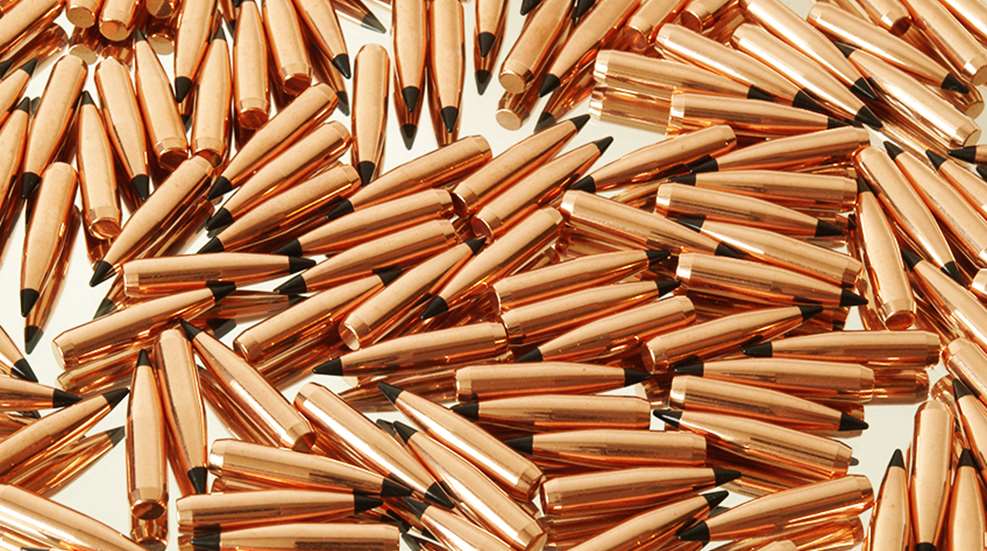
Big-game hunting is different from other hunting. First, because there’s but a single goal, that is to shoot one specific animal. If you are hunting upland, small game, waterfowl, doves or just about anything else, there will be multiple critters added to the game bag. With big game, it’s just the one.
Big game also evokes a higher emotional price. In my opinion, the intensity of taking a deer or an elk far exceeds that of a rabbit or mallard. With big-game hunting, there’s a huge investment of treasure, time and emotion, and it’s all focused on a single event. That’s a lot of pressure for that event to go well.
For a rifle hunter, there is but one tiny physical connection between the hunter and the game being hunted, and that’s the single bullet that is fired at the animal. It all comes down to how well that bullet does its job.
Are premium bullets worth the extra price for big-game hunting?
I don’t understand why that’s even a question. Nothing is more important than the bullet. It’s something that can have a huge impact on the results of your hunt, and it’s something that is easily controlled by the hunter. The pain of paying the extra cost of a high-tech bullet will fade much faster than the agony of failure that can result from using an inadequate bullet.
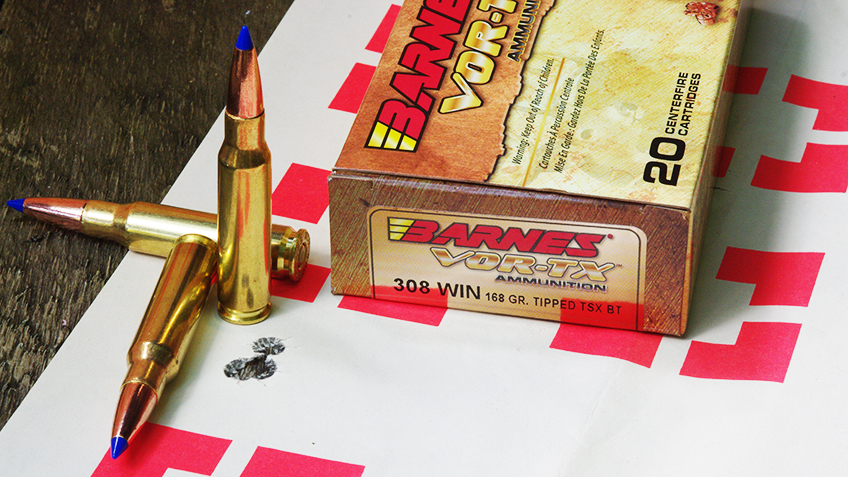
There are a few aspects to consider when picking a hunting bullet including accuracy, external ballistics and terminal ballistics. Not so long ago, the gap was wide between bullets producing these qualities. It was often hard to find accuracy from a high-tech hunting bullet, but that gap has closed. Today’s best hunting bullets are extremely accurate. Many of the newer designs are also well-suited for long-range work; they have a high ballistic coefficient for flat trajectory and their expansion window is wide enough to manage impacts at long range as well as up close.
The best engineered hunting bullets will expand early after contact, usually to about two times the diameter, then they control or stop the expansion so that the bullet shank remains intact and the bullet will penetrate straight until it exits or stops. Most of the high-tech bullets focus on high weight retention, as that helps with penetration, energy transfer and tissue damage.
That controlled expansion and weight retention is what places them above common bullets. The less expensive cup and core bullet can, under extreme conditions, over-expand until it turns inside out, or it can fragment on impact, failing to penetrate. Another common failure is for the jacket and the core to separate, which leads to reduced penetration. The high-tech hunting bullets are all designed to prevent these things from happening.
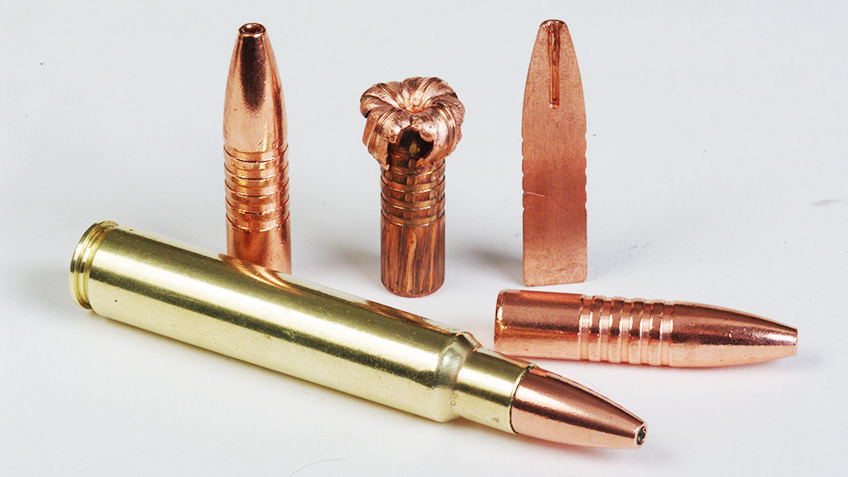
There are several bullet designs that strive for this terminal ballistic goal while using different technology. There are also some subtle differences in the terminal performance based on the individual bullet design. While they all work across a wide spectrum of big game, some bullets work better on deer while others might be at their best on elk or moose.
The savvy hunter can pick a bullet that is balanced with the performance needed for their personal hunting choices.?
Bonded Bullets
Shortly after the turn of the millennium, bonded-core hunting bullets became all the rage. Technology is used to bond the lead or lead alloy core to the jacket. While it’s a bit more complicated, the simple explanation is that they are soldered together. This keeps the two from separating on impact, as was a common occurrence with the old cup and core bullet design.
This bonding alone is often not enough. Some early bullets kept expanding until they flattened out like a giant bonded washer, which wreaked havoc with penetration. Companies soon figured out that in addition to bonding, they needed to control the expansion. This was accomplished in a multitude of ways, but the most common is a tapered jacket that grows thicker as the bullet expands.
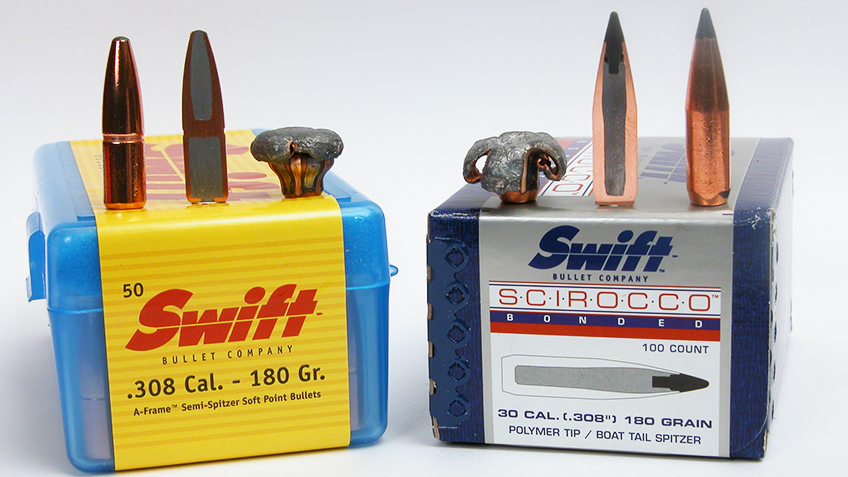
Bonded bullets like the Swift Scirocco, Nosler AccuBond, Hornady InterBond and others have adapted further technology to make sleek bullets with a high ballistic coefficient for long-range shooting. These high BC bonded bullets are often the best choice for long-range hunters.
Some, like the Nosler AccuBond Long Range, are specifically designed for long-range use. The expansion controlling technology has developed bullets that will expand at the lower velocity from a long-range impact and still hold together with a close-range, high velocity impact.
The Norma Oryx has been a great performing bonded bullet that I have used on three continents. But Europeans are not as enamored with long-range as American hunters, so Norma took the technology to the next step with their new BondStrike bullet. This bonded-core bullet uses a long ogive, plastic tip and a boattail design to produce some of the highest ballistic coefficients for any hunting bullet.
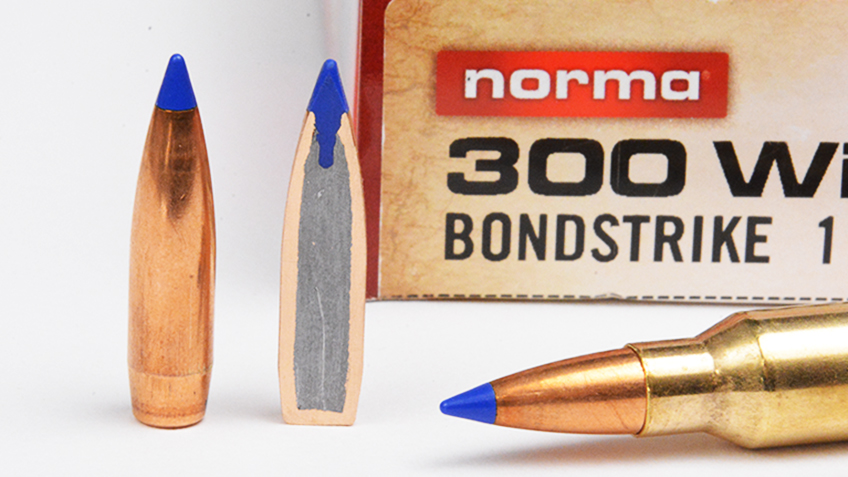
I recently tested the BondStrike on feral hogs while hunting in Texas. I already had range tested the bullet, so I knew it was extremely accurate and a good performer at extended ranges—at least on targets—but this was my first experience on game. The big boars are constructed solid and they’re a tough test for any hunting bullet. After shooting several very large wild hogs, I’m very impressed with the BondStrike’s terminal performance. We got early expansion, straight tracking and full penetration on most shots with a large exit wound, indicating plenty of energy left as the bullet exits—pretty much perfect bullet performance by current standards.
Fusion
The Fusion bullet is bonded, but is manufactured much differently than other bonded bullets. The jacket is electrically-plated to the core of the bullet, much the same as chrome plating a trailer hitch ball.
It starts with a lead core that is plated with jacket material. This process creates a very uniform jacket. The thickness of the jacket can be controlled to the molecule.
The jacketed core is then formed in a series of dies to create a pointed, boattail bullet. This sleek, pointed, boattail design has a high ballistic coefficient for long-range shooting, but is “bonded tough” for close-range work, as well.
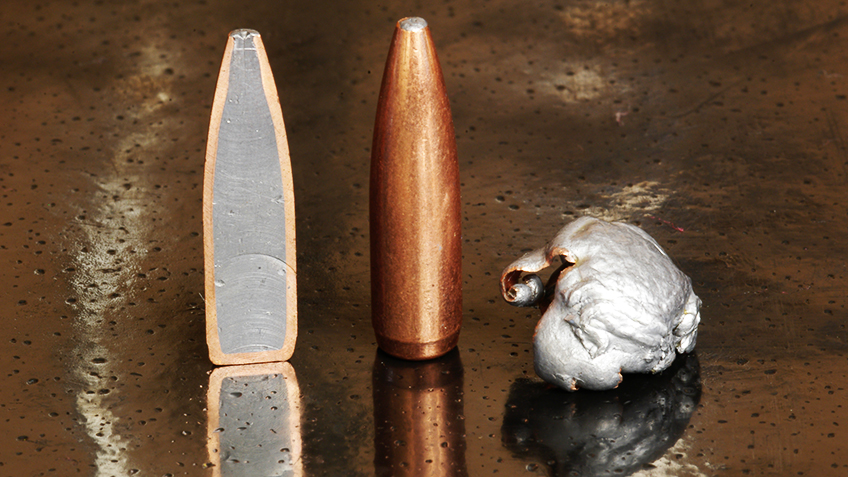
The tip of the bullet is skived so that when it expands, the jacket and core will form specifically shaped petals. The petals are then spread and compressed back into shape to “pre-program” the bullet for a specific expansion pattern. Then, the bullet is reformed, but the metal retains a “memory” of the expansion pattern that will easily repeat upon contact with the target.
The Fusion bullet is designed for deer-sized animals, but it has performed well on larger game. One of my best black bears was taken with Fusion in a .338 Federal rifle.
Dual-Core Bullets
The first premium hunting bullet was the Nosler Partition, introduced in 1948. The Partition was the first to use the dual-core design, and even today is one of the most trusted big-game bullets on the market. The bullet has two lead cores, separated by a wall or “partition” of jacket material.
The concept is that the front core will expand until it reaches the partition, then it will stop expanding and the rear core and will continue to drive the bullet through the animal.
Variations of this design include the bonded front core used by the Swift A-Frame bullet and the Trophy Bonded line of bullets including the Trophy Bonded Tip. The Trophy Bonded bullets use a front core of lead alloy and a solid shank in the rear, so it’s not a true dual core bullet, but it does embody the principle.
While the Partition will often shed its front core, leaving the rear shank to penetrate, these bullets use a bonded front core that helps keep the expanded lead locked to the jacket material. They often retain at or nearly 100 percent of the bullet weight.
Additionally, they often expanded to a very large frontal diameter, which transfers energy fast and will not penetrate as deep as other bullets. Given an adequate cartridge, this can be a very good thing, as the large wound channels kill game quickly.
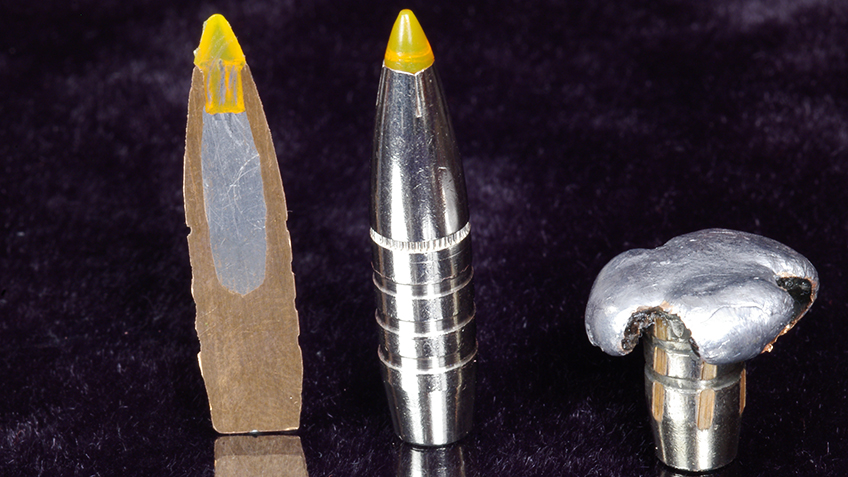
As technology has developed, bullet engineers have been able to adjust the diameter of expansion to aid in deeper penetration. For example, Trophy Bonded Tip doesn’t expand as large as the original Trophy Bonded bullet, which allows deeper penetration. As a result, this bullet has performed well for me on deer, mountain goats and even moose. The Swift A-Frame has worked for me on everything from deer to Cape buffalo.
Any of these bullets are an excellent choice for most big-game hunting—they’re extremely dependable in their terminal performance. Accuracy was an issue in the early years, but today they can be very accurate.
Monolithic or Monometallic Bullets
Randy Brooks developed the one metal concept with the Barnes X-Bullet, first offered in 1988. The all-copper design was so revolutionary and different from conventional lead-core bullets that acceptance was a bit slow in coming. But, once the X-Bullet’s performance in the field became known, the Barnes X-Bullet and its descendants have become leaders in the premium hunting bullet line.
As the X-Bullet has evolved, it’s become one of the most accurate hunting bullets available, as well. When I’m testing handloads for a new cartridge, the Tipped Triple Shock X (TTSX) bullet is often the most accurate bullet tested.
Several companies now offer monolithic bullets made from one homogenous material. Barnes uses pure copper, while others, such as the Hornady GMX or Nosler E-Tip use a copper alloy—often it’s gilding metal, which is an alloy of copper and zinc.
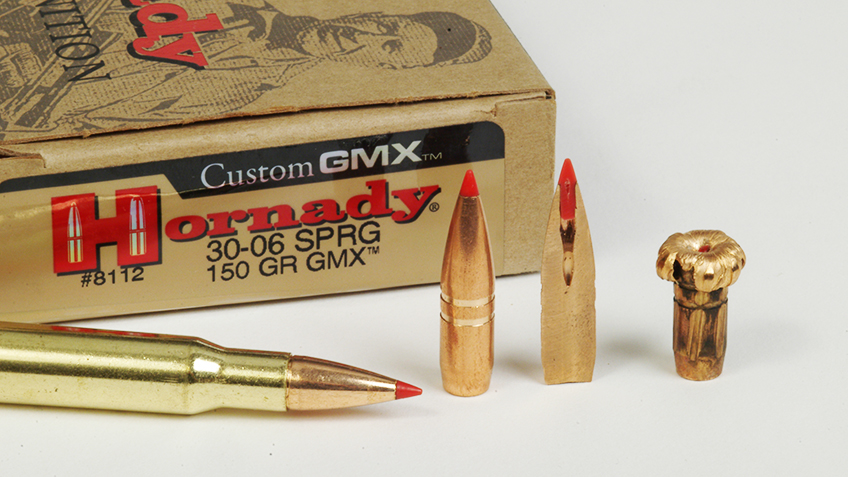
These bullets have very controlled expansion and won’t over-expand as lead-core bullets can. The metal tip will expand to the bottom of the hollow-point where the solid shank begins, then it’s mechanically blocked from further expansion. By adjusting the tip using different technical designs, engineers can control how wide the bullet will expand and what shape the expansion will take.
With the Barnes X-Bullet design, there are four petals that have space between them to act as relief cuts when penetrating through tissue. As a result, this is perhaps the deepest penetrating expanding bullet on the market.
These solid metal bullets also expand easily and quickly. Barnes has used ultra-high-speed photography to confirm that the bullet is fully expanded in the first two inches of penetration. Monolithic bullets are known for deep penetration and reliable expansion—they usually are designed to have 100 percent weight retention unless they hit a major bone.
In much of Africa, the monolithic design is considered the best bullet for a wide range of game, up to and including dangerous game like Cape buffalo.
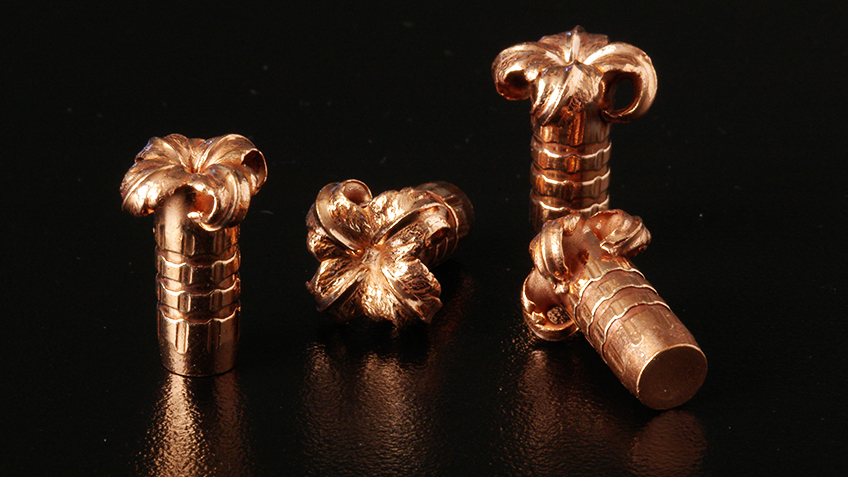
I’ve used these bullets when hunting deer and antelope, and have also used them on larger game like brown bear, Cape buffalo and Asian buffalo. They perform well on all larger game, and I trust and prefer this design for much of my big-game hunting. In fact, performance is so good that a hunter can often drop down in bullet weight to gain higher velocity and flatter trajectory while still maintaining the expected terminal performance. Additionally, these bullets can be used in lead-free zones.
There is one downside: because copper or copper alloy has a lower specific gravity than lead, monolithic bullets tend to be longer in any given weight. In some cartridges, this can be a detriment, as the bullets protrude into needed powder space.
Conclusion
Premium hunting bullets are highly engineered and can be complicated to build, therefore they’re more expensive than a common cup-and-core bullet, but a smart hunter considers that an investment in the future. There are a lot of things that can go wrong on any big-game hunt, and most are out of your control, but the one physical connection you have with the game—the bullet—is fully in your control. Sure, cheap bullets work most of the time, but why bet your trophy against “most of the time” odds when there’s a better alternative?



































